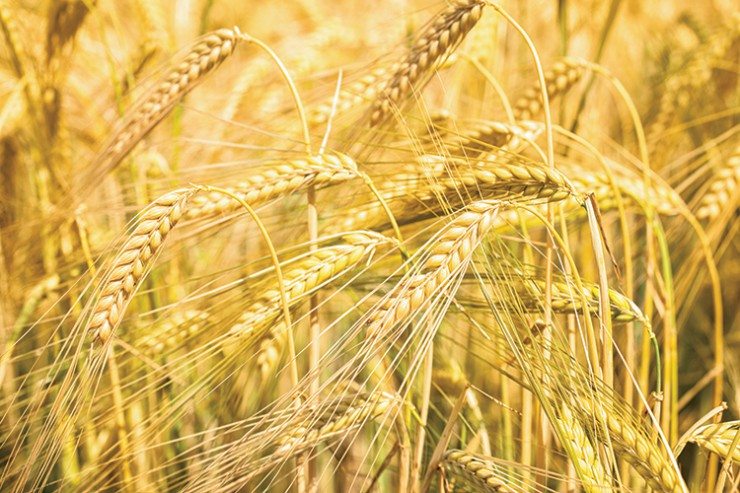If you haven’t already heard the term “seed value creation”, you will. Over the past number of years, a group from across the seed industry, including farmer organizations, have been exploring ways to strengthen the investment in wheat breeding. With the volume of noise farmers are bombarded with, not many realized this was happening until Agriculture and Agri-Food Canada (AAFC) and the Canadian Food Inspection Agency (CFIA) started consultation meetings in late November to get input on several royalty models. If any changes are eventually made, they wouldn’t be until 2020.
The larger farmer population is just joining the conversation, although there are ways to gain information, and share your views.
- At the bottom of this article, links are provided to an online survey.
- Wheat Growers would like to hear from you – [email protected], (306) 955-0356.
- On Wednesday December 19th there is a webinar on Seed Value Creation (information to join is below).
- AAFC / CFIA will continue consultations throughout the winter.
After the first of four consultation meetings held in past weeks, the Wheat Grower Board felt it important to put an early indication out regarding their views. Although we wanted to learn through participation in the consultations, we knew we stood for investment in research and breeding. Our press release quoted Gunter Jochum, Manitoba farmer, Director of the Wheat Growers, and participant of the first consultation in Winnipeg November 23rd, as stating, “Why wouldn’t farmers want both public and private breeders to develop new wheat varieties to provide more technology and choice?” It went on to say “As farmers, we don’t feel the status quo is good enough, and want improvements including more investment, innovation and competition.” Levi Wood, President of the Wheat Growers, “Competition is good, so if a new system encourages and facilitates more of it, we feel confident it’s a move in the right direction.”
Here’s a quick summary;
Why do we need any change as we’re still generating new varieties? After all, there are 18 new cereal varieties registered for 2019, across seven classes/crop combinations, and six companies. In terms of private breeding, Syngenta has been breeding in Canada for many years through their acquisition of AgriPro, although a recent report stated they were putting their North American hybrid program on hold, and entering Europe first. Bayer has recently established a program in Saskatoon, and plant breeders’ rights (PBR) passed in 2015 enabled the formation of LCRC (CANTERRA and Limagrain) which brings germplasm from their international inventory. So what’s the problem?
The issue is not just that we can do more, but we’re at risk of losing competitiveness. The current system is vulnerable. To be sustainable, the public wheat breeding system should be able to stand on its own. The six companies bringing new products to market in 2019 are mostly pulling from the public breeding program. And several estimates provided at the consultation meetings indicate only 10% of breeding costs may be covered by the royalties that go back to the breeders (an estimate being confirmed). Public breeding programs would benefit from a new royalty scheme as they’re the breeders, so any new royalty would go back to the them (as per licensing agreements they have).
Private breeders, encouraged by PBR, are unlikely to stick around if royalties don’t even cover costs. This could be framed as a discussion about how much of a “public good public”, breeding should be. Although, if it is considered a public good, without the need to be profitable, it’ll be difficult to attract private investment to compete. If public breeding programs lose taxpayers’ support in future decades, will farmers want to foot the whole bill, and even if they do, will those programs keep Canada competitive with wheat growing competitors that have both public and private programs and technology?
Solutions are being explored. Incremental investment could be from a variety of sources:
- Get government to pay more: That’s likely wishful thinking in today’s environment. AAFC says it won’t pull out of wheat research although wants to focus more on core “discovery upstream science and research”. Perhaps they’d be willing to match growers’ contributions as they do in some countries?
- Get growers to pay more into check-offs: Growers are tiring of “check-off” fatigue. They also contribute via rail RME overpayments that go to WGRF which funds some breeding, as well as being a taxpayer (government assets at AAFC and universities).
- Have royalty models which will help close the gap in breeding funding. After two years of discussions, two models recommended by the Grains Roundtable are what the consultations were asking about, while capturing any other ideas.
- Trailing royalty on farm saved seed (FSS) i.e. paid on the use of seed originating from certified seed.
- End Point Royalty (EPR) paid on grain delivered, regardless whether it was grown from certified seed or FSS. Rebates would be made if certified had been used.
*Although values vary depending on what varieties would be used, a rough estimate at this point was $1-2 per acre.
*Varieties not protected by PBR (pre-Feb 2015) could continue to be used royalty-free.
Encourage private organizations to fund breeding even if that’s not their core business, as they see it as necessary for their business, considering there’s a lack of it currently. PepsiCo funded oat breeding for years before finally stopping.
Some grower organizations have looked at a grower owned breeding company in the past. Surely owners would want the business to be profitable, so still require solutions.
Find a way for consumers to pay more, and funnel those funds back to breeding somehow.
What other ideas do you have?
Don’t let those who have a negative view of Ag corporations blur your view of the good work that has been done by our public breeders at Ag Canada and Universities. Their programs need help as does the wheat breeding sector overall. This is not about delivering a canola model for wheat, although many farmers like the profits canola has and continues to deliver. This is about establishing a “built for Canada” cereal solution. Let’s park the conspiracy theories, and work together to develop a model that enhances public breeding, while encouraging private investment. Let’s ensure we have access to new technology, including traits and specifications that may be developed outside the public program.
We can choose from, build on and customize from what other countries have tried. They’d used a variety of systems, with varying degrees of success.
The actions and results of Canada’s wheat competitors indicate the system needs to change. Our own results indicate it, value chain groups including farmers agree, as do the academics. A challenge with breeding is that it has always had a lag time for results. We have technology like CRSIPR and new breeding tools that will help speed up the actual targeted field results. UPOV91 adoption has demonstrated investment will come with proper policies. Let’s not delay any further, the next step in that evolution. Let’s allow our private breeders to thrive, and private one of all sizes to be profitable. Let’s have farmers, breeders both public and private, and government create a Canadian-made model including the processes to manage it more effectively and efficiently. Let’s learn from those who have implemented systems already, and borrow with pride as is appropriate and advantageous to Canada.
A balanced yet competitive public AND private breeding environment, supplemented by check-offs (including government matching to some level), and backed by AAFC and university core research, can make for a much healthier wheat market in Canada.
And whatever is decided, it should be simple, and cost effective to administer. Farmers need to understand their costs, where their contributions go. They need to understand any royalty system as that impacts their direct cost. And they deserve to understand where their check-offs and rail overpayments go.
Wheat Growers are issuing a call to action. Please engage in this discussion, as we all need to voice our opinions.
Here’s some further information:
- Presentation from early 2018, at meeting where varieties are recommended for registration.
- On Wednesday December 19th at 10:00 AM – 11:00 AM CST there’s a webinar on Seed Value Creation:
You can also dial in using your phone:
Canada: +1 (647) 497-9391
Access Code: 327-086-077
- Here’s a website with the information used in the previous point.
- Read this article about Seed Value Creation.
- AAFC/CFIA Slide Deck re: Stakeholder Engagement for Value Creation Models (presented December 6, 2018)
Here’s online survey’s others are conducting:
- Farmers’ attitude towards funding wheat research (University of Regina). This is a survey about your attitude towards different ways of funding additional wheat research and breeding in Canada. This study will be used to inform future government policy initiatives related to wheat variety development. Your participation will involve a completion of a 20-minute on-line survey. Your identity and the information you provide will be kept completely confidential. There will also be a draw for an IPad as part of the survey. If interested in participating in the survey, send [email protected] an email and she will send an invitation to the survey with your personal link.
- Views can be submitted to AAFC / CFIA:
Carla St. Croix AAFC: [email protected] (613) 773-1221
Anthony Parker CFIA: [email protected] (613) 773-7188
Source: Western Canadian Wheat Growers Association





